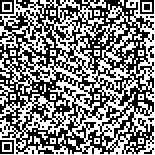俞其囡,杨美霞,傅建明.虚拟现实平衡训练对脑性瘫痪患儿平衡功能及日常生活活动能力的影响[J].中华物理医学与康复杂志,2023,45(11):992-996
扫码阅读全文

|
| 虚拟现实平衡训练对脑性瘫痪患儿平衡功能及日常生活活动能力的影响 |
|
| |
| DOI:10.3760/cma.j.issn.0254-1424.2023.11.008 |
| 中文关键词: 脑性瘫痪 虚拟现实 平衡功能 日常生活活动能力 |
| 英文关键词: Cerebral palsy Virtual reality Balance Activities of daily living |
| 基金项目:嘉兴市科技计划项目(2019AD32223) |
|
| 摘要点击次数: 3476 |
| 全文下载次数: 3824 |
| 中文摘要: |
| 目的 观察虚拟现实平衡训练对脑性瘫痪(简称脑瘫)患儿平衡功能及日常生活活动(ADL)能力的影响。 方法 选取痉挛型脑瘫患儿40例,按随机数字表法分为干预组(21例)和对照组(19例)。所有患者均接受常规康复训练(包括运动治疗、作业治疗、家庭康复训练等),训练时间1次/日,每次30 min,每周5 d,持续干预3个月。在此基础上,对照组给予常规平衡功能训练,包括坐位、站立平衡训练、重心前后左右转移能力训练等;干预组结合虚拟现实技术(采用Biomaster虚拟现实训练系统)进行平衡功能训练,训练内容包括图片匹配、足球、滑雪等虚拟情景模式,训练患儿重心前后左右转移能力;2组患儿的平衡功能训练时间均为1次/日,每次20 min,每周5 d,持续干预3个月。分别于干预前及干预1个月和3个月后,采用平衡功能仪(评定内容包括轨迹长、外周面积、单位面积轨迹长)、Berg平衡量表(BBS)评分和改良的Barthel指数(MBI)评分对2组患儿的平衡功能及ADL能力进行评估。 结果 ①与组内干预前比较,对照组和干预组患儿干预3个月后的坐位平衡轨迹长[(70.78±15.99)mm和(60.89±11.04)mm]、外周面积[(5.18±1.78)mm2和(3.54±1.34)mm2]、单位面积轨迹长[(15.04±5.09)mm和(19.17±7.10)mm] 均明显改善(P<0.05);对照组和干预组患儿干预3个月后的站立平衡轨迹长[(63.62±13.94)mm和(55.56±10.61)mm]、外周面积[(5.67±1.54)mm2和(4.04±0.98)mm2]、单位面积轨迹长[(11.92±3.63)mm和(14.34±3.57)mm]亦均明显改善(P<0.05),且干预组的上述指标改善程度均显著优于对照组(P<0.05)。②干预3个月后,对照组和干预组患儿的BBS评分[(26.21±5.02)分和(31.95±5.00)分]和MBI评分[(41.79±0.94)分和(45.33±5.23)分]亦均较组内干预前明显改善(P<0.05),且干预组的改善程度均显著优于对照组(P<0.05)。 结论 虚拟现实平衡训练可显著改善脑瘫患儿的平衡功能和ADL能力。 |
| 英文摘要: |
| Objective To observe the effect of virtual reality (VR) balance training on the balance and ability in the activities of daily living (ADL) of children with cerebral palsy. Methods Forty children with spastic cerebral palsy were divided at random into an intervention group (21 cases) and a control group (19 cases). All received 30 minutes of daily routine rehabilitation training, including therapeutic exercise, occupational therapy and home rehabilitation training. Everyone also received 20 minutes of balance training 5 days a week for 3 months. That included sitting and standing balance training and training in transferring the center of gravity. Beyond that the intervention group additionally trained on the Biomaster virtual reality training system doing image matching, playing football and skiing. Before the experiment and after 1 and 3 months, both groups′ balance trajectory length, peripheral area, and the unit area the trajectory length were documented and also using the Berg balance scale (BBS). ADL ability was quantified using the modified Barthel index (MBI). Results ①After the 3 months of training there was a significant improvement in the average trajectory length, peripheral area and unit area trajectory length of both groups sitting and standing. The average values of the intervention group were,however, significantly superior to the control group′s averages. ②After the 3 months there were also significant improvements in the groups′ average BBS and MBI scores, again with significantly greater improvement in the intervention group. Conclusion Virtual reality balance training can significantly improve the balance function and ADL ability of children with cerebral palsy. |
|
查看全文
查看/发表评论 下载PDF阅读器 |
| 关闭 |